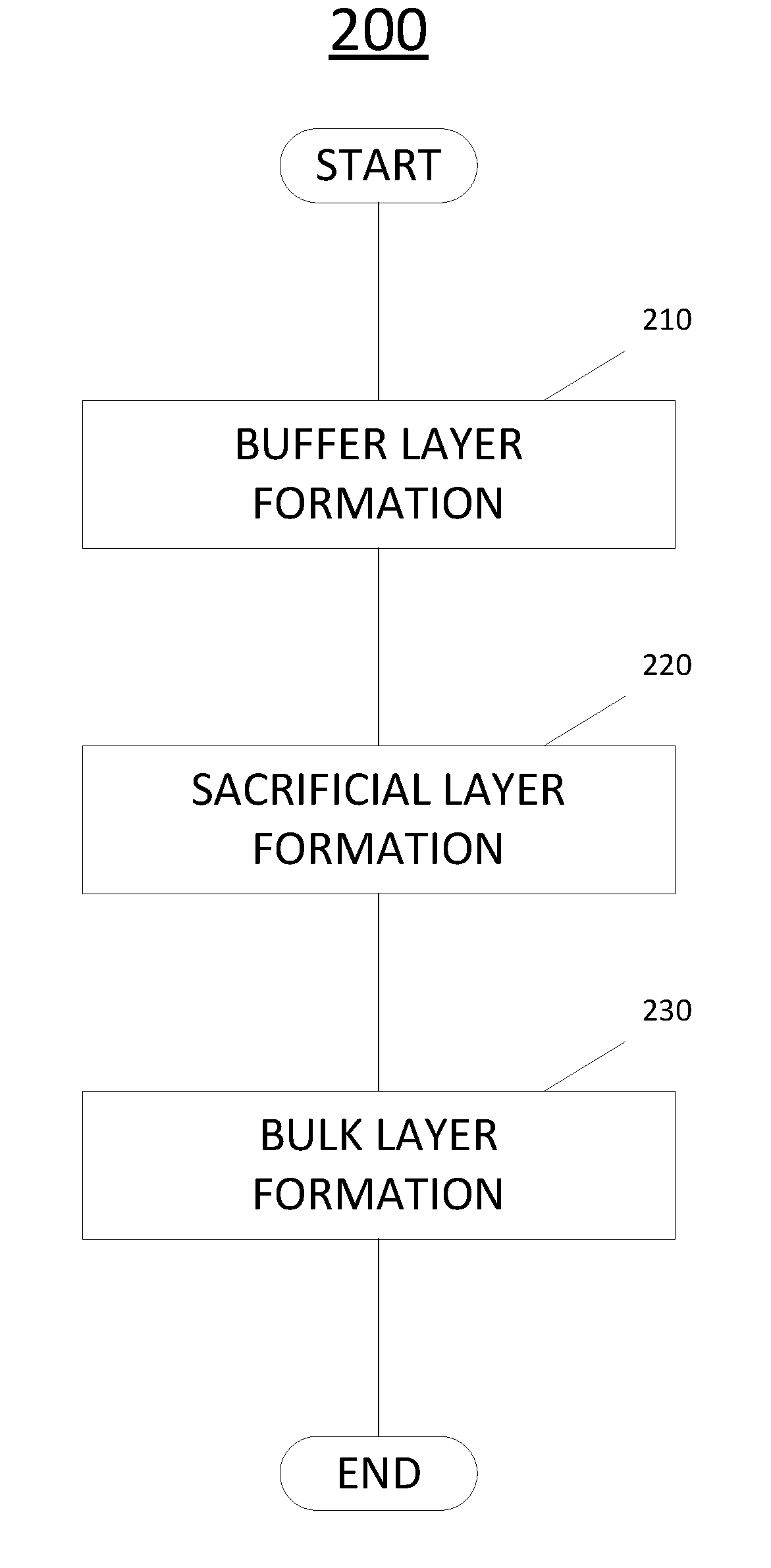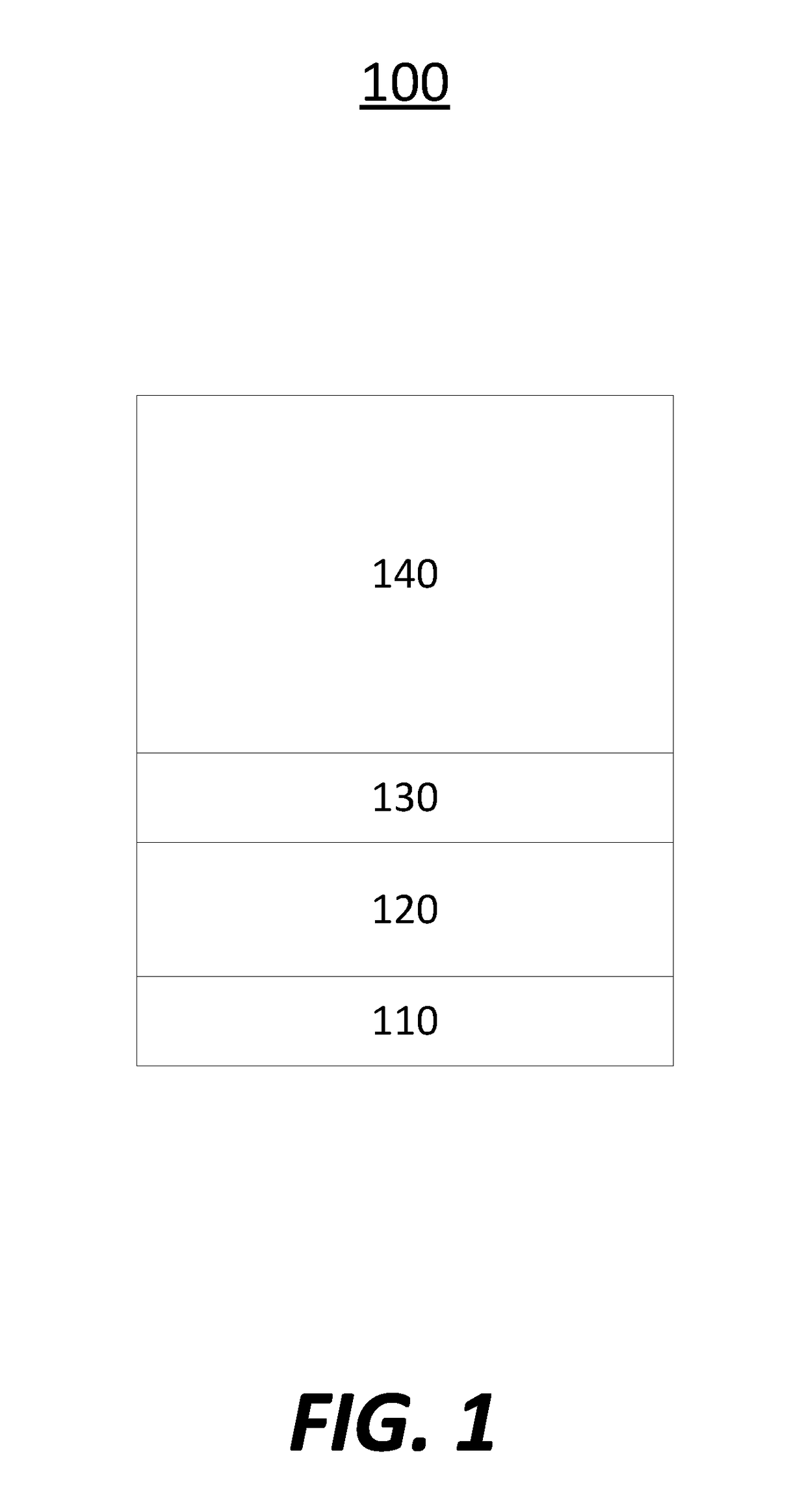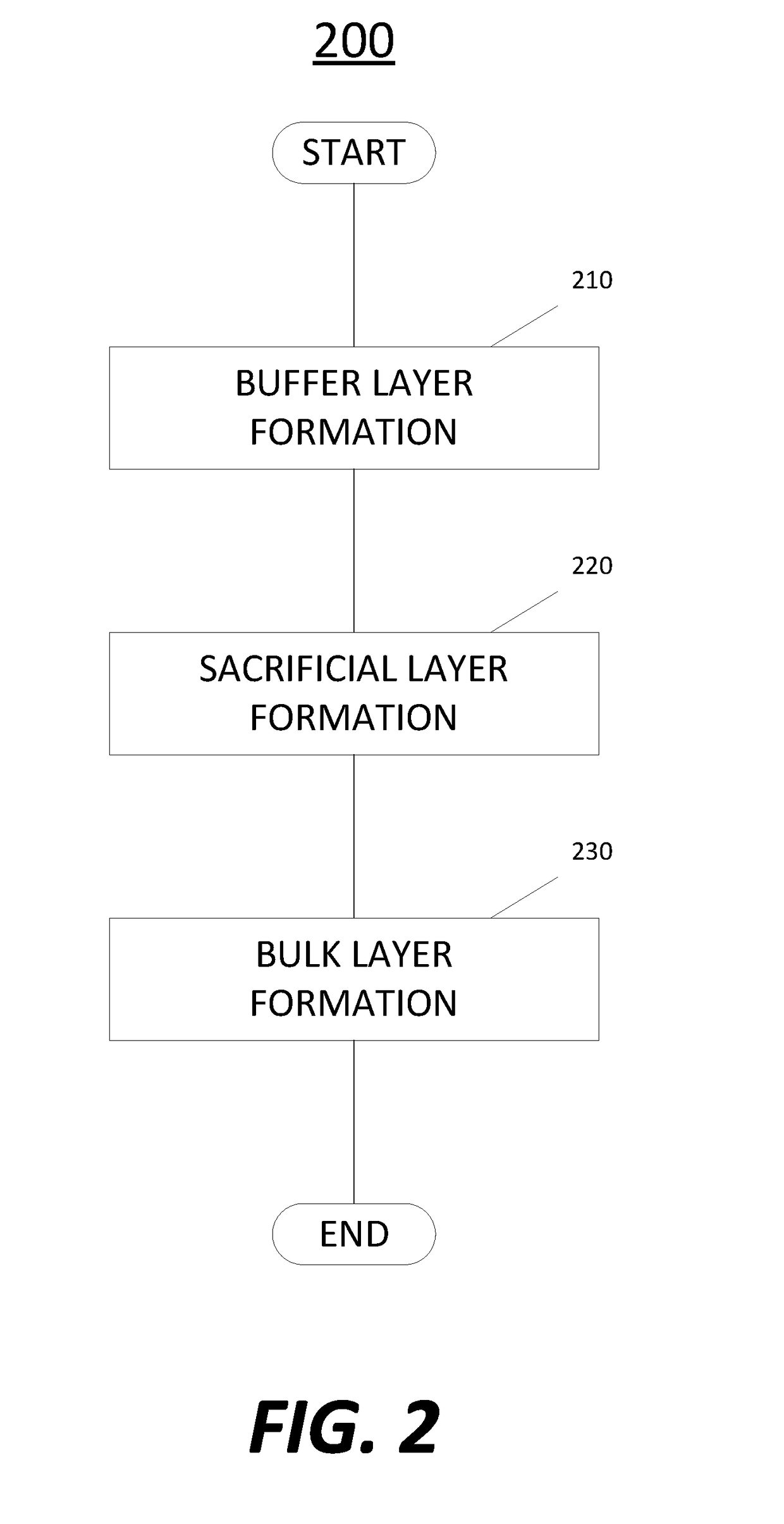Formation of epitaxial layers via dislocation filtering
a technology of dislocation filtering and epitaxial layer, which is applied in the direction of basic electric elements, electrical apparatus, semiconductor devices, etc., can solve the problems of degrading and achieve the effect of improving the electrical and optical properties of the epitaxial layer
- Summary
- Abstract
- Description
- Claims
- Application Information
AI Technical Summary
Benefits of technology
Problems solved by technology
Method used
Image
Examples
Embodiment Construction
[0014]Although certain embodiments and examples are disclosed below, it will be understood by those in the art that the invention extends beyond the specifically disclosed embodiments and / or uses of the invention and obvious modifications and equivalents thereof. Thus, it is intended that the scope of the invention disclosed should not be limited by the particular disclosed embodiments described below.
[0015]Germanium-tin and silicon-germanium-tin layers can be grown epitaxially. Approaches to grow these films are disclosed in U.S. patent application Ser. No. 14 / 827,177, entitled “Methods of Forming Highly p-Type Doped Germanium Tin Films and Structures and Devices Including the Films,” and U.S. patent application Ser. No. 14 / 956,115, entitled “Methods of Forming Silicon Germanium Tin Films and Structures and Devices Including the Films,” both of which are incorporated by reference.
[0016]However, during formation of the germanium-tin and silicon-germanium-tin films, dislocations may ...
PUM
| Property | Measurement | Unit |
|---|---|---|
| pressure | aaaaa | aaaaa |
| pressure | aaaaa | aaaaa |
| temperature | aaaaa | aaaaa |
Abstract
Description
Claims
Application Information
 Login to View More
Login to View More - R&D
- Intellectual Property
- Life Sciences
- Materials
- Tech Scout
- Unparalleled Data Quality
- Higher Quality Content
- 60% Fewer Hallucinations
Browse by: Latest US Patents, China's latest patents, Technical Efficacy Thesaurus, Application Domain, Technology Topic, Popular Technical Reports.
© 2025 PatSnap. All rights reserved.Legal|Privacy policy|Modern Slavery Act Transparency Statement|Sitemap|About US| Contact US: help@patsnap.com



